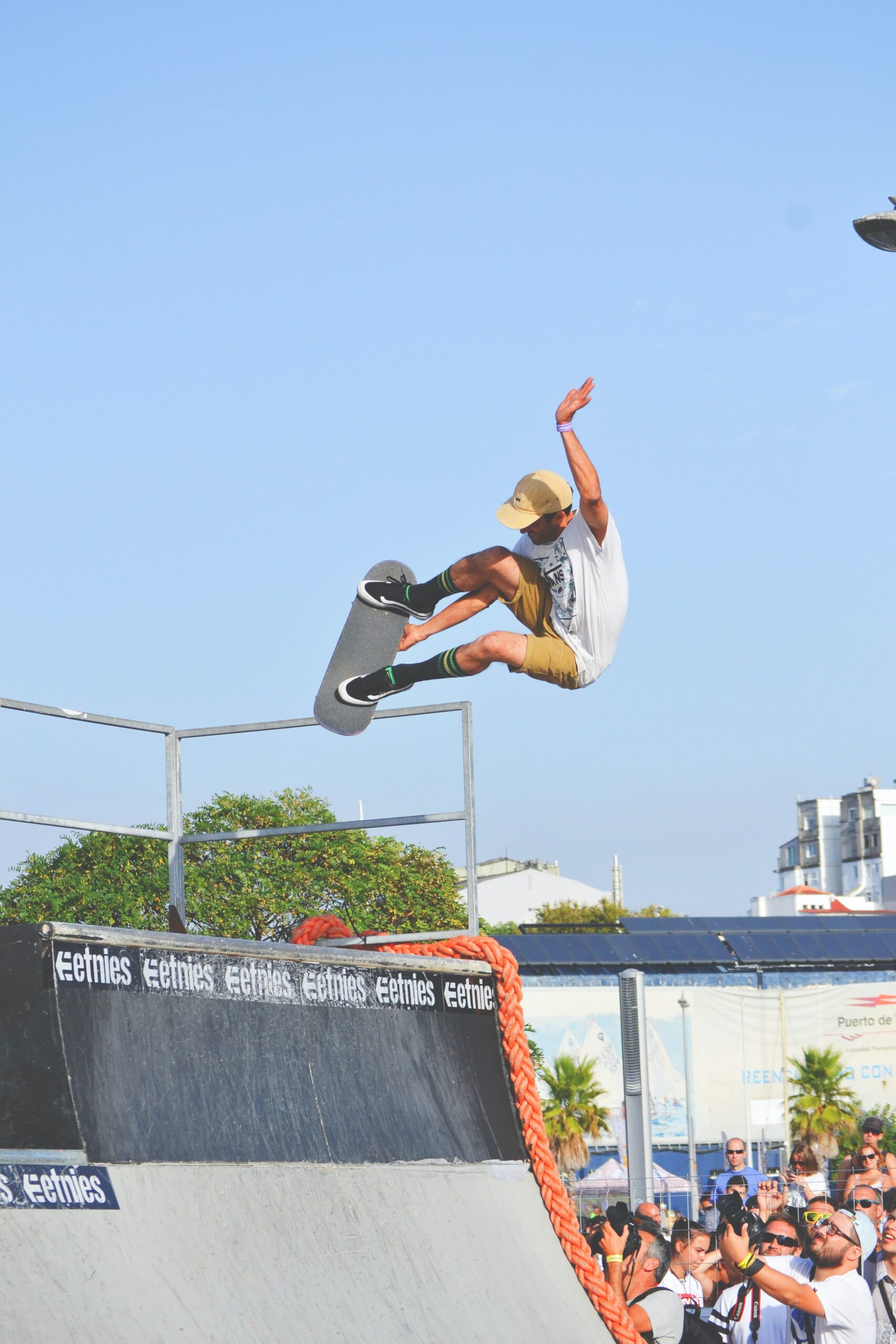Maintaining skateboard trucks is essential for achieving smooth turning and control during your skateboarding sessions. By properly maintaining your trucks, you can ensure that your skateboard responds effortlessly to your motions, allowing for an enjoyable and controlled riding experience. From tightening loose bolts to regularly lubricating the pivot cups, this article will guide you through the necessary steps to keep your skateboard trucks in top shape. So, grab your skateboard and let’s dive into the world of truck maintenance!

Why is Maintaining Skateboard Trucks Important?
Maintaining skateboard trucks is crucial for ensuring smooth turning and control while riding. Skateboard trucks play a vital role in the performance of your board, as they are responsible for allowing you to turn and pivot effectively. Without proper maintenance, your trucks can become worn-out, lose their responsiveness, and even lead to accidents on the road. By regularly checking and adjusting your trucks, cleaning and lubricating them, replacing worn-out components, and choosing the right bushings, you can enhance your skateboarding experience and extend the lifespan of your trucks.
Checking and Adjusting Skateboard Trucks
Inspecting the Bushings
To maintain optimal turning and control, it is important to regularly inspect the bushings of your skateboard trucks. Bushings are the small rubber or urethane components located inside the truck hanger that provide cushioning and allow for smooth turning. Over time, bushings can become worn-out, cracked, or compressed, which can affect the performance of your trucks. By visually inspecting the bushings, you can identify any signs of damage or wear and replace them accordingly.
Tightening or Loosening the Trucks
Another essential aspect of maintaining skateboard trucks is adjusting the tightness of the trucks. Tightening or loosening the trucks allows you to customize the turning performance based on your preferences and riding style. If you find that your trucks are too tight, it can inhibit your ability to turn smoothly. On the other hand, if your trucks are too loose, you may experience instability while riding. By finding the right balance and adjusting the trucks accordingly, you can optimize your turning abilities and overall control on the board.
Verifying the Truck Angle
The angle of your skateboard trucks can also impact your turning and control. Most trucks come with a standard angle, but some riders prefer to modify it to suit their riding style. The truck angle refers to the orientation at which the truck baseplate is attached to the deck. By adjusting the truck angle, you can have a more responsive and maneuverable skateboard. However, it is important to note that significant changes in truck angle can affect stability, so it’s essential to experiment and find the right balance for your needs.
Cleaning and Lubricating Skateboard Trucks
Removing Dirt and Debris
Regularly cleaning your skateboard trucks is essential for maintaining their smooth operation. When riding, dirt, dust, and debris can accumulate on the trucks, affecting their turning abilities. To clean your trucks, remove the wheels and use a damp cloth or brush to wipe away any dirt or debris. Pay close attention to the pivot area and kingpin, as these are the parts that require the most attention. By keeping your trucks clean, you can ensure that they function properly and provide optimal turning and control.
Applying Lubrication
Lubricating your skateboard trucks is another important step in maintaining their performance. After cleaning the trucks, it is recommended to apply a small amount of lubrication to the pivot area, kingpin, and bushings. This lubrication helps to reduce friction and ensures smooth turning and control. There are various skateboard-specific lubricants available on the market, so choose one that is suitable for your trucks. Avoid over-lubricating, as it can attract dirt and lead to a decrease in performance.
Replacing Worn-out Components
Replacing Bushings
If you notice that your skateboard trucks are not providing the desired turning and control, it may be time to replace the bushings. Bushings can wear out over time, losing their elasticity and responsiveness. To replace the bushings, remove the kingpin nut, washer, and old bushings. Clean the truck hanger and install the new bushings, making sure they are aligned properly. Reassemble the truck and adjust the tightness to your desired level. By replacing worn-out bushings, you can restore the turning capabilities of your skateboard trucks.
Swapping Truck Pivot Cups
Pivot cups are small components located inside the truck baseplate that provide a pivot point for the hanger to rotate smoothly. Over time, these pivot cups can wear out and become compressed, leading to decreased turning performance and control. If you notice any signs of wear or a decrease in responsiveness, it may be necessary to swap the pivot cups. To replace the pivot cups, disassemble the truck, remove the old cups, clean the baseplate, and insert the new cups. Reassemble the truck and ensure that the pivot cups are properly aligned. Swapping pivot cups can greatly improve the turning abilities of your skateboard trucks.
Changing Kingpin or Kingpin Bushings
The kingpin is the large bolt that holds the skateboard truck together and allows for adjustment. If you find that your trucks are not providing the desired turning and control, it may be necessary to replace the kingpin or the kingpin bushings. Over time, the kingpin can become worn or bent, leading to decreased responsiveness. To replace the kingpin or the bushings, disassemble the truck, remove the old components, clean the hanger, and install the new kingpin or bushings. Ensure that everything is securely tightened before riding.

Choosing the Right Bushings for Turning and Control
Understanding Different Bushing Durometers
When it comes to choosing the right bushings for your skateboard trucks, it is crucial to consider the durometer. The durometer refers to the hardness of the bushings, which directly affects the turning abilities and responsiveness of your trucks. Softer bushings provide a greater turning radius and a more responsive feel, ideal for riders who prioritize maneuverability. On the other hand, harder bushings offer more stability and are preferred by riders who require precise control. Understanding the different durometers available and experimenting with various combinations can help you find the perfect bushings for your turning and control needs.
Considering the Rider’s Weight and Skateboard Style
In addition to durometer, it is important to consider the rider’s weight and their skateboarding style when choosing the right bushings. Heavier riders generally require harder bushings to provide adequate support and stability. Lighter riders may prefer softer bushings for more responsiveness. Furthermore, the style of skateboarding also plays a role in bushing selection. If you primarily ride in skate parks and perform technical tricks, medium-soft bushings are often preferred. For those who enjoy cruising and carving, medium-hard or hard bushings may be more suitable. By taking these factors into account, you can select bushings that enhance your turning abilities and control.
Proper Truck Adjustment for Turning and Control
Loose Trucks for Better Turning
Many riders prefer to have slightly loose trucks for better turning capabilities. Looser trucks allow for a wider turning radius, making it easier to execute sharp turns and maneuvers. However, it is important to find the right balance, as excessively loose trucks can lead to instability and lack of control. Experiment with different levels of tightness and find the sweet spot that allows for smooth turning without sacrificing stability.
Tighter Trucks for More Stability
If stability is a top priority for your skateboarding style, tightening your trucks may be the way to go. Tighter trucks provide increased stability and control, making them ideal for riders who need precise movements or ride at higher speeds. However, it is important to note that tighter trucks can limit your turning capabilities, so finding the right balance is crucial. Remember to adjust the tightness according to your personal preferences and riding style.

Enhancing Turning and Responsive Control
Using Riser Pads
Riser pads are small plastic or rubber inserts that are placed between the skateboard deck and the trucks. They serve multiple purposes, one of which is enhancing turning and responsive control. By adding riser pads to your skateboard setup, you can increase the distance between the deck and the trucks. This extra height allows for greater lean and turning ability, providing an improved turning radius and more responsive control. Experiment with different thicknesses of riser pads to find the optimal setup for your turning needs.
Adjusting Wheel Sizes and Hardness
The size and hardness of your skateboard wheels can greatly impact your turning abilities and control. Smaller wheels tend to offer quicker and more responsive turns, while larger wheels provide a smoother ride and more stability. Additionally, harder wheels offer less grip but slide easily, making them suitable for technical tricks and slides. Softer wheels, on the other hand, provide more grip and are ideal for cruising and carving. By experimenting with different wheel sizes and hardness, you can fine-tune your turning abilities and control to match your skateboarding style.
Experimenting with Truck Mounting Positions
Another way to enhance turning and control is by experimenting with truck mounting positions. Most skateboard decks have multiple truck mounting holes, allowing you to adjust the distance between the front and back trucks. Moving the trucks closer to the nose or tail of the deck can alter the board’s turning radius and responsiveness. By trying out different truck mounting positions, you can fine-tune your skateboard’s turning abilities to suit your preference and riding style.
Preventing Damage and Extending Truck Lifespan
Avoiding Heavy Impacts
One of the best ways to maintain your skateboard trucks is to avoid heavy impacts. Excessive force or landing hard can cause damage to the trucks, leading to loss of responsiveness and control. When performing tricks or riding in rough terrain, try to land as smoothly as possible and avoid heavy impacts. Additionally, be cautious of curbs, stairs, and obstacles that can put excessive pressure on the trucks. By preventing unnecessary damage, you can extend the lifespan of your skateboard trucks and ensure optimal performance.
Regular Maintenance Routine
Establishing a regular maintenance routine is essential for keeping your skateboard trucks in optimal condition. This routine should include regular inspections to identify any signs of wear or damage, cleaning to remove dirt and debris, lubricating to reduce friction, and replacing worn-out components when necessary. By dedicating a small amount of time to maintaining your trucks, you can ensure smooth turning and control every time you step on your skateboard.

The Role of Rider Techniques in Trucks’ Performance
Proper Weight Distribution
While maintaining skateboard trucks is important, it is equally crucial to master rider techniques that can enhance trucks’ performance. Proper weight distribution plays a significant role in turning and control. When turning, shifting your weight towards the direction you want to go can help initiate and execute the turn smoothly. Distributing your weight evenly on both feet can provide better stability and control. By practicing and refining your weight distribution techniques, you can optimize the performance of your skateboard trucks.
Mastering Carving Techniques
Carving is a fundamental skateboarding technique that involves making smooth, flowing turns by leaning your body and shifting weight from one edge of the board to the other. By mastering carving techniques, you can greatly improve your turning abilities and control on the board. Carving allows you to maintain a higher speed while executing fluid turns, making it an essential skill for cruising and maneuvering through various terrains. With practice, you can enhance the performance of your skateboard trucks and enjoy a more dynamic and responsive ride.
Understanding the Limitations of Skateboard Trucks
Terrain Limitations
While skateboard trucks are designed to provide turning and control, they do have their limitations, especially when it comes to different terrains. Skateboard trucks are ideally suited for smooth surfaces such as skate parks, sidewalks, and smooth pavement. Rough terrains, gravel, and uneven surfaces can pose challenges to trucks’ performance, as they can cause the wheels to lose traction and hinder turning capabilities. It is important to be aware of these limitations and adjust your riding style accordingly when encountering challenging terrains.
High-Speed Stability
At higher speeds, skateboard trucks may provide less stability and control due to increased forces and the potential for speed wobbles. When riding at high speeds, it is crucial to maintain proper balance and control your weight distribution effectively. Additionally, choosing trucks with a higher stability rating and a lower turning radius can help mitigate stability issues. It is important to prioritize safety and ride within your skill level and comfort zone when riding at higher speeds.
In conclusion, maintaining skateboard trucks is essential for achieving smooth turning and control while riding. By regularly checking and adjusting your trucks, cleaning and lubricating them, replacing worn-out components, and choosing the right bushings, you can optimize your skateboarding experience and extend the lifespan of your trucks. Remember to experiment with different settings and techniques to find the perfect setup for your turning abilities and riding style. With proper maintenance and rider skill, you can enjoy a smoother, more responsive ride on your skateboard.

